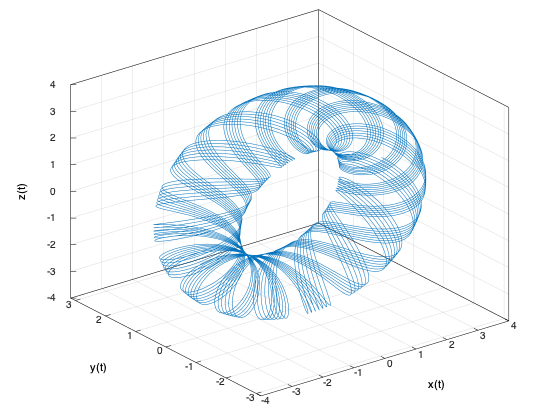#include <cmath>
#include <matplot/matplot.h>
int main() {
using namespace matplot;
tiledlayout(1, 2);
auto ax1 = nexttile();
auto t = iota(0, pi / 20, 10 * pi);
auto xt1 = transform(t, [](auto t) { return sin(t); });
auto yt1 = transform(t, [](auto t) { return cos(t); });
plot3(ax1, xt1, yt1, t);
title(ax1, "Helix with 5 Turns");
auto ax2 = nexttile();
t = iota(0, pi / 40, 10 * pi);
auto xt2 = transform(t, [](auto t) { return sin(2 * t); });
auto yt2 = transform(t, [](auto t) { return cos(2 * t); });
plot3(ax2, xt2, yt2, t);
ax2->box(false);
title(ax2, "Helix with 10 Turns");
show();
return 0;
}
